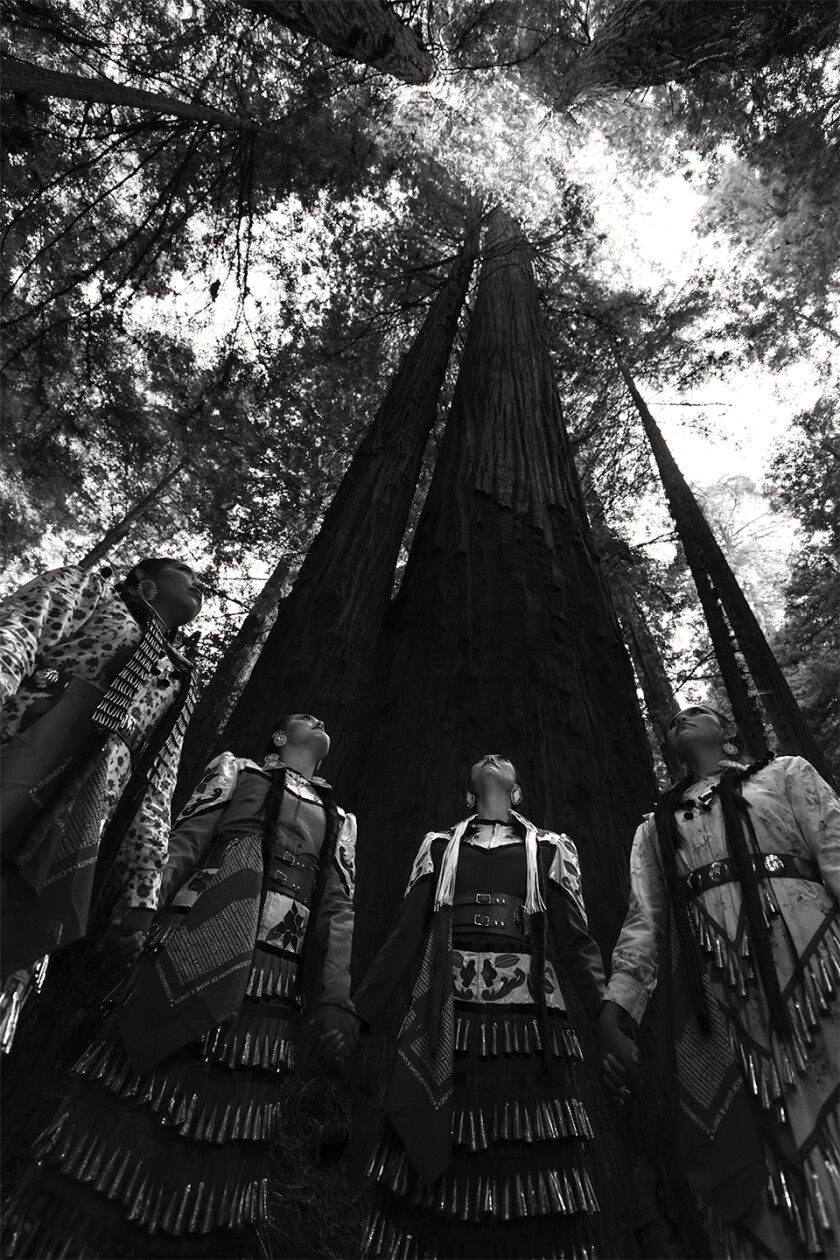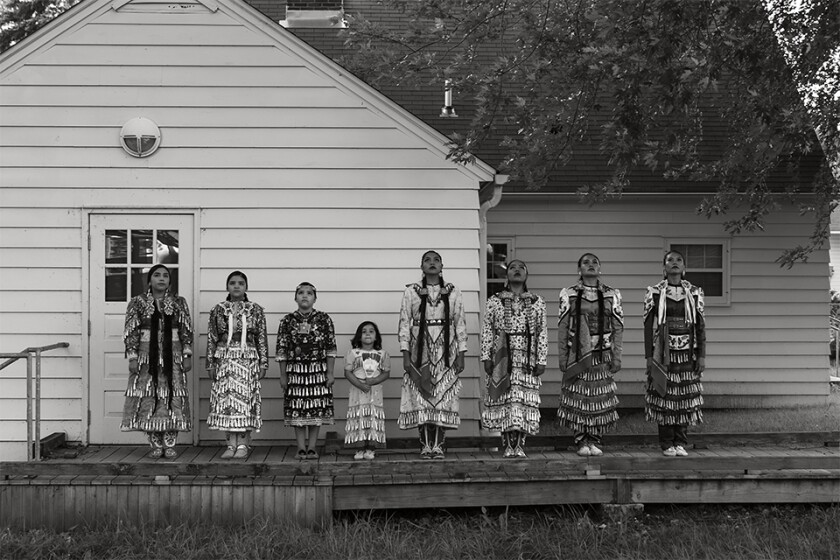"In a sense, I thought of our project in the National Parks as a reclamation of the land, and at the same time we were blessing the land.”
The origins of the Ojibwa Jingle Dress date back over a hundred years. Most versions of the oral history state that during the 1918 flu pandemic, the daughter of an Ojibwa Midewinini (medicine man) fell ill. During her illness, he was visited by dreams of spirits who gave him instructions to create a dress and to perform a ceremonial dance. He was assured by his dream guides that this would help in healing his daughter.
Eugene Tapahe, a Diné artist, photographer, and now-MFA student in the Department of Art, has a unique connection to this story. Tapahe graduated with a BFA in Graphic Design from BYU in 1992. Since then, he has built a career as a professional photographer with a portfolio ranging from landscapes to product photography, with everything in between. But in March of 2020, when the country began to lock down in the midst of the pandemic, he started to worry – not just about security, but also about the health of his family and friends, both at home and across the country.

“It was a time when I was reflecting on what was happening in my family, and where I was going to go,” Tapahe says. “The world had pretty much closed down, and I am a full-time photographer. That’s my job, and all the shows were being cancelled. I had a lot of worries about how we were going to make it through the year, just like everybody else. There were a lot of questions, things we didn’t have answers to.” In the midst of this upheaval, Tapahe had a dream. In this dream, he saw bison grazing in the fields of Yellowstone National Park, and four dancers performing the traditional Jingle Dress dance. This inspired him to begin Art Heals: The Jingle Dress Project.

“I knew that the Jingle Dress was a healing dance; my daughters had danced it before,” he says. “When I posted on social media about my dream, I got a call about a month later from one of my friends, [University of Minnesota professor] Brenda Child. She asked me about how the project started, and I told her about the dream ... she asked me if I knew the origin of the Jingle Dress. I said I didn’t, and she’s a historian, and has done a lot of research about the practice. She told me the story, and it was almost chilling to me, because a lot of the origin story mirrors what happened in my dream.”
With his two daughters (Dion and Erin) and their two friends (JoAnni and Sunni) acting as dancers, Tapahe began to travel across the continent. As the women danced at National Parks and significant indigenous sites, he would photograph them. “Within our project, there are many types of art coming together; from the drums, the sounds of the jingles, the photography, being in nature, and the dance itself. These have all been brought together for this healing process, and all of them together is what helps the healing happen.”
The work Tapahe does is as much about the setting as it is the performance and its documentation. “Because those were the sacred spaces where Native people lived; it was where the animals, the water, all of it was there, and they all prospered. With colonization, they were pushed off of those lands. In a sense, I thought of our project in the National Parks as a reclamation of the land, and at the same time we were blessing the land.”

As they traveled, Tapahe shared the results of each performance to social media. The project began to garner some attention from a range of news outlets. In the midst of a deluge of negative media stories, both biological and socio-political, he was moved to make art that could heal through its beauty. “That was people realizing the objective of the project, which is to share with the people,” he says. “Share the hope and the healing of the jingle dress dance, and to share that goodness with others. Instead of trying to add to that negative spirit, we wanted to bring hope and healing, and to do it in a beautiful way.”
Tapahe was also approached by the Birmingham Museum of Art, which selected Art Heals: The Jingle Dress Project for inclusion in Voices So True, an exhibition featuring notable Indigenous American artists like Wendy Red Star and Kay WalkingStick—as well as purchasing a series of 16 of his photographs for their permanent collection. “Originally, I felt surprised by the museum acquiring that many images at one time,” Tapahe says of the acquisition. “They also said it was pretty unusual for them, but they were able to find donors who really loved what we were doing with the project; the photos, images, and what they represented, especially during this time of worldwide pandemic and the way it has impacted the world…I think it’s a wonderful opportunity.”

In 2021, Tapahe returned to BYU to pursue an MFA in the Department of Art. “The reason I wanted to go back to school,” he says of his return, “[is that] I feel like there is something else I need to be doing, beyond what I’m doing right now. I really want to teach.” This project in particular has already served as a unique opportunity to connect with a wide range of viewers and provide a platform for Native history and tradition. “Being able to have this project, it has done the one thing of helping people heal and bringing them hope, but it’s also helped to teach people. It’s brought forward Native issues…people are still here, and we do great things. I want to be able to teach these kinds of things; that’s one of the biggest reasons I wanted to go back to BYU and study art. I wanted to show that art does heal.” The exhibition Voices So True is on view through January 30, 2022 at the Birmingham Museum of Art in Birmingham, AB. You can see Eugene Tapahe’s work (including Art Heals: The Jingle Dress Project) at his website, tapahe.com, and his Instagram page, @tapahe.
